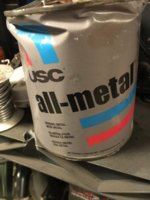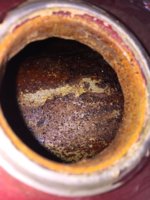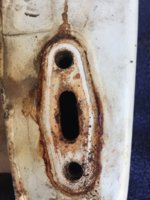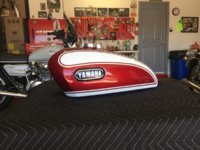https://rover.ebay.com/rover/0/0/0?mpre=https://www.ebay.co.uk/ulk/itm/401971844448
The fact that the recesses for side badges have been filled in is not a deal breaker for me as I’m not planning on using them.
Just curious as to opinions on wether this is salvageable? Is that a difficult question to answer without seeing the extent of the rust close-up?
Daniel.
The fact that the recesses for side badges have been filled in is not a deal breaker for me as I’m not planning on using them.
Just curious as to opinions on wether this is salvageable? Is that a difficult question to answer without seeing the extent of the rust close-up?
Daniel.
Last edited:





